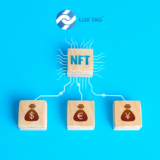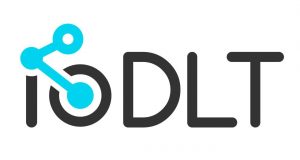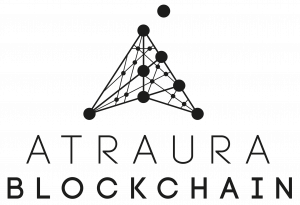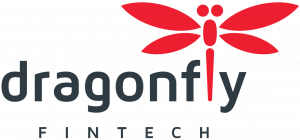
First appeared on Lattice80 by Joe Seunghyun Cho
Impact Blockchain is LATTICE80’s initiative to bring technology and community together to create solutions with social impact. Industry experts early on have recognized the potential for blockchain to transform how transactions are created and processed across industries and between businesses and individuals, thanks to a secure and distributed way of recording and sharing data in decentralized networks.
In this four-part series, we look into how the blockchain platform can help achieve UN’s 17 Sustainable Development Goals “to end all forms of poverty, fight inequalities and tackle climate change, while ensuring that no one is left behind.” The 17 SDGs are part of the 2030 Agenda for Sustainable Development, a 15-year plan adopted by 193 world leaders in the September 2015 summit that enjoins all countries “to promote prosperity while protecting the planet”.
This second installment takes us through the next four goals for gender equality, clean water and sanitation, affordable clean energy, and decent work and economic growth. Click here for the article on the first four goals of eliminating poverty and hunger, promoting health and providing education.
 5. Gender Equality
5. Gender Equality
With women making up half of the world’s population, the goal for gender equality aims to provide women and girls with equal opportunities and access to basic rights as their male counterparts, ensuring that both genders can be equally productive and contributing members of their societies. Sadly, gender inequality persists: 35 percent of women worldwide have been subjected to physical abuse and sexual violence; nearly 15 million girls are forced to early marriage; and an estimated 133 million girls and women have experienced some form of female genital mutilation. In the corporate world where there are more aggressive efforts to correct this inequality, women still earn less on the dollar and have less representation in senior management and C-level roles.
What can blockchain do?
Women’s empowerment lies on how soon we get out of antiquated ideas about women and women’s roles in society. This is something that should be supported by governments and the global community as a whole. Blockchain can help by being the platform on which data can be made secure and current, helping women feel in control of their identities, funds and resources. Security of individual and public records such as personal identification, land titles and better access to money can empower women to seek opportunities for themselves as they choose to. Digital wallets can improve safety by allowing its female users to receive, save, transfer or spend money without the need to carry physical cash.
IDbox, for example, is a solar-powered device that can create a unique digital identity and wallet for banking, remittance, trading, access to healthcare and voting. Communities within developing countries that have poor access to internet and electricity can use this blockchain- and AI-based device. Digital wallets such as SPENN by Blockbonds is a digital wallet that also provides income-generating opportunities throughout the network.
Most importantly, empowerment is in education and the chance to learn and grown. Considering differences in how girls are “raised to be perfect” and boys are “raised to be brave” in this interesting 2016 TED talk video, the disparity in upbringing can be observed in women’s lack of involvement and participation in new technologies and in investing practices. For example, Bitcoin community engagement by women as of 2018 is still very low at a 9%. Financial solutions such as Marvelstone’s Miss Kaya will help socialize investment concepts and strategies to women.
 6. Clean Water and Sanitation
6. Clean Water and Sanitation
This goal aims to ensure access to clean and fresh water for drinking and sanitation to everyone, and assure availability in the face of rising population and changing climate. Shortages in water supply and poor water quality negatively impact food security, livelihood choices and educational opportunities for poor families across the world. Droughts in specific areas contribute to worsening states of poverty, hunger and malnutrition, while floods and other water-related disasters account for 70 percent of deaths related to natural disasters. Meanwhile, lack of access to basic sanitation services contribute to water pollution, as more than 80 per cent of wastewater from human activities flow out to our rivers and seas.
What can blockchain do?
Better water infrastructure and management is key to this goal and fortunately, blockchain can potentially help in large ways. The decentralized ledger technology can help improve water quality and overall water management, trading and monitoring practices. Blockchain can help water supply, distribution and usage be more efficient and transparent where needed. Combined with data analytics, IoT and AI, more data can be gleaned from water sources that can help manage risks and determine other alternative water and energy systems.
The Genesis Research and Technology Group has created a system for the purification of wastewater collected after oil and gas drilling. The system is transportable and chemical-free with the potential to save water and transport efforts. On top of this innovation, the group is developing an IoT water quality sensor that will also store water quality records immutably on the Ethereum blockchain. This will provide transparency in monitoring the quality of water and can alert officials of potential problems in the future.
Projects can be initiated to raise funds to improve water treatment processes and facilities. Such is the idea behind WaterChain, Inc’s decentralized water funding initiative, a platform where investors can choose which water projects to fund and share in the profits.
 7. Affordable and Clean Energy
7. Affordable and Clean Energy
Access to affordable, reliable, sustainable and modern energy is an everyday essential for all of us. All major infrastructures that drive human and economic development are powered by energy and electricity. Fossil fuel have been the major source of electricity for decades now, producing large amounts of carbon and greenhouse gases into the environment. Energy production is a major contributor to climate change, accounting for around 60 percent of total global greenhouse gas emissions.
As much as the need to provide energy to almost one billion people who still function without it and use dangerous combustible fuels for household energy, it is also critical to find and use clean, renewable sources that do not harm the planet. UN reports that despite the ratio of energy used per unit of GDP declining over the past decade, switching to more sustainable sources will cost around $400 billion per year to $1.25 trillion by 2030.
How can blockchain help?
Blockchain’s ability to create secure and trustworthy environments can boost business and increase usage of renewable energy sources. Through digital coins or tokens, blockchain can create earning and investment opportunities to resell or consume renewable energy in a distributed system, potentially reducing operational costs. Digital tokens can be used by wind, solar and hydro producers to transact directly with investors and consumers without any middleman. Pilot projects for local community energy and peer-to-peer systems have already been successfully run by the Brooklyn Microgrid in New York, PowerLedger in Australia, Conjoule in Germany and, to name a few.
IoT and AI on blockchain can help potentially drive better exchanges of data between devices, building smarter and more cost-efficient homes and empowering people to better manage their energy consumption and how their decisions affect the climate.
 8. Decent Work and Economic Growth
8. Decent Work and Economic Growth
Achieving an inclusive and sustainable economic growth is key to the goal of eradicating poverty through decent, stable and well-paying jobs. In 2013, there are reported to be over three billion people who earn less than US$2.50 a day. International Labour Organization (ILO) estimates that there are 204 million people unemployed as of 2015.
Governments are called to create the necessary conditions for people to be productive in an economy that does not harm the environment or sacrifice natural resources. Moreover, sustainability is also needed for a growing population that also means a growing labor market. Between 2016 and 2030, about 470 million jobs or around 30 million jobs per year are needed to keep up with growing working age population globally. Efforts must also be made to improve working and earning conditions for some 780 million men and women.
Jobs should be able to provide fair income, decent working conditions that safeguard physical, emotional and mental well-being, and opportunities for personal development and social inclusion. Global and local economies can provide alternative earning and investing opportunities along with financial services that teach financial literacy, income management and asset accumulation.
What can blockchain do?
A lot. Not only in providing jobs for the many new projects and organizations that the technology will spur to create, but blockchain is primarily used as a tool for investment. Initial coin offerings democratize investing opportunities for investors with smaller capitals regardless of location in the world, where investors these days can be anyone with a disposable income. In the same vein, funds can be made available for businesses and projects through ICOs.
Blockchain’s distributed ledger technology can be used to provide security and transparency in data such as digital assets, public records and land titles. This means that content creators can have better control over their creative outputs and be fairly and directly compensated for their work. Musicoin and Inmusik.co are examples of blockchain-based ecosystems that aim to do just that for musicians and artists.
Other blockchain-based solutions help to provide cheaper alternatives for remittance, banking and transportation services, ultimately boosting a worker’s purchasing power.
Additional References:
https://www.renewableenergyworld.com/articles/2018/02/blockchain-could-change-everything-for-energy.html









